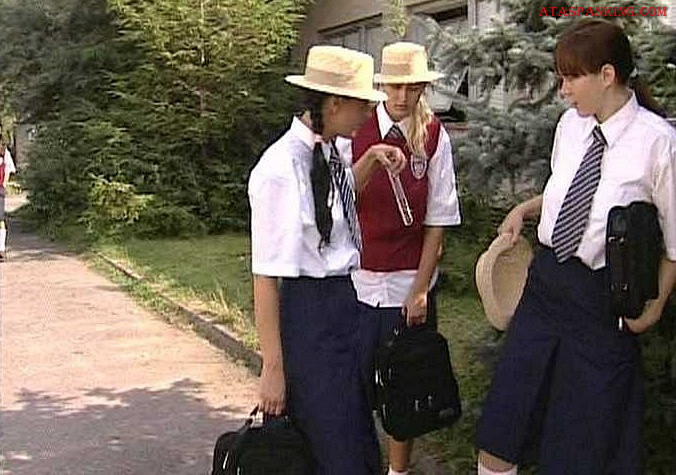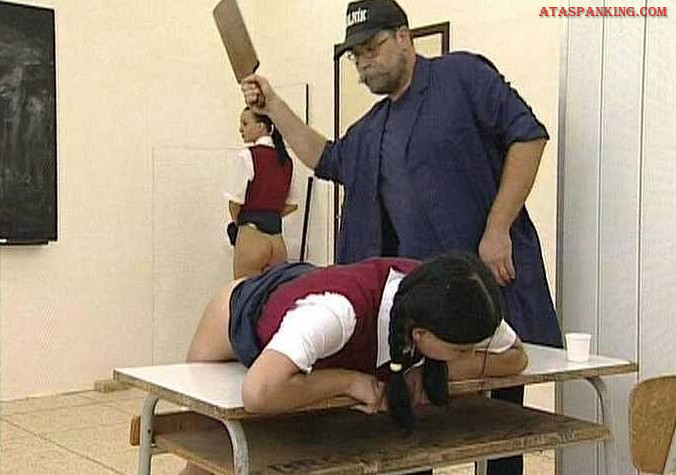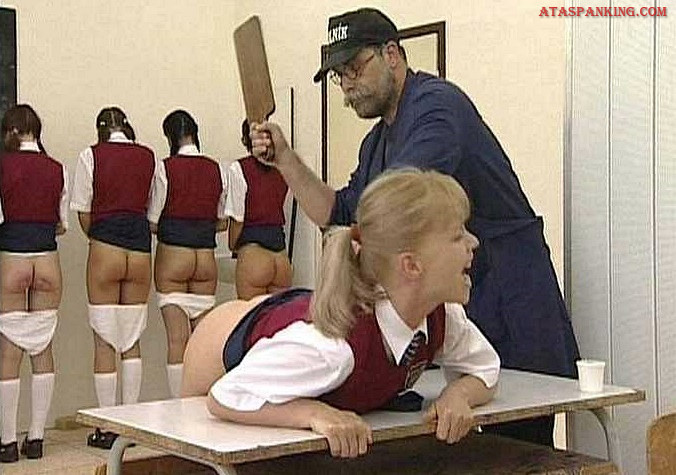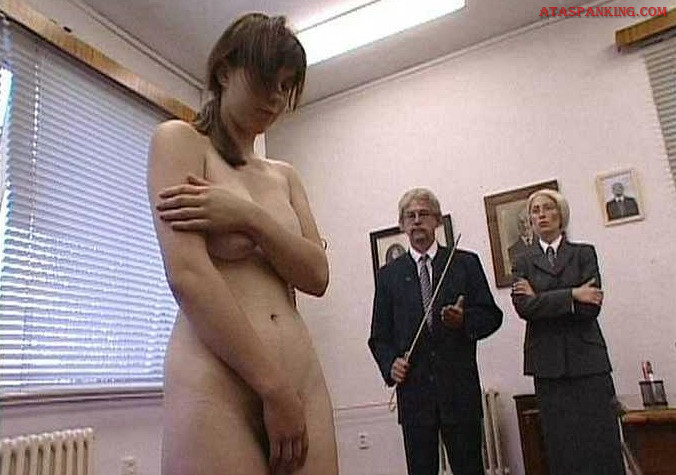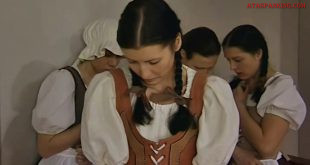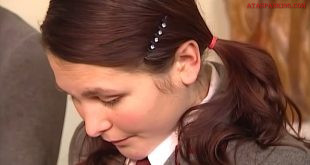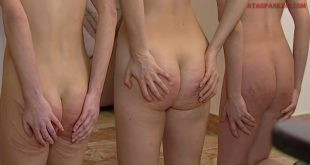The school to which girl students were hurrying was one of the sample achievement of socialism – a one-storey prefab box within a neglected garden, which defied, with all of its appearance, a blue and white board announcing to the coming students that St. Thomas School was founded as early as in …. . The appearance of the school expressively showed the decline which affected the Czech lands under the socialism regime: Once a proud and prestige girls’ school, whose former graduates came with a suggestion that it should be reopened immediately after the “velvet revolution”, finally gained, thanks to numerous personal interventions, its base on the outskirts of the capital city. The staff could consider this success – other traditional schools ended up even worse and all that remained was a record in chronicles and nostalgia of their former graduates. The subject of envy of those few private schools that, despite the resistance of former “comrades” firmly seated in the state administration chairs, were restored, was a few pieces of the original school equipment found in the depository of the Pedagogy Museum which created at least a hint of a feeling of historical continuity.
Generally, the continuity of traditions was a problem. It was obvious that formerly the staff only consisted of women, but the senseless laws of the European Union, to which the Czech Republic has submitted with an unwise hope for early joining, did not make it possible to reject a job applicant only for the reason of unsuitable sex. Although the headmistress tried to persuade the trade unions and the ministry several times with arguments about the tradition of the school, including a simple logic of the completely girls’ school, the officials educated by the ideas of perverted equality were rejecting her arguments with a mischievous joy. So she had to agree to admit several men as members of the staff – at least she tried to choose such men in whom the risk of close contacts with girl students was as little as possible. The men teachers were therefore, to great displeasure of the girl students, fanatics of their science, which they taught with eagerness and holy enthusiasm regarding the other disciplines as entirely nonessential for practical life.
However, this selection of teachers caused other inconveniences personified by the chemistry teacher who, despite his relatively young age, had behind him several international patents, two disasters of a medium extent, and an effaced suspended sentence for a criminal offence of general threat arising from the production of a plastic explosive in the home conditions of a single-room flat in a prefab housing estate. Whereas the schoolmistresses, enthusiastically, and the schoolmasters, at least orderly, accepted the obligation of a dignified representation of the school, the chemistry teacher silently ignored all reproofs regarding his appearance..
What was excused to the chemistry teacher, at least temporarily, was not excused to the girl students who were ordered to wear uniforms in accordance with the school regulations that included details such as underwear. Here, of course, the main role was played by the hygiene reasons, but along with them also social aspects were considered when the decision on the parts of the uniform was being made: The uniform, equal in all details, efficiently blurred the difference between those girls who were driven to school in parents’ luxury saloon cars and those who got to school using the public transport. There was a continuous fight raging between the girls and the teachers about the neatness and completeness of the uniforms. “Good manners”, at least of the class troublemakers, included putting on and adjusting uniforms in the last possible moment just before the class teacher came to make a record of the absent students and to inspect the classroom before classes started. Particularly the compulsory cotton underwear was an appreciative subject of scorn, not for the material used but for the design, which was called “knickers from head to tail”; however, only those students saw it in this way whose underwear, with its almost total absence of fabric, gave the reason to explore whether it was still clothing or only cleverly made makeup.
The moral duty of the girl students worthy of their names was also to profess “fashion stripes”: In the spirit of its best traditions, St. Thomas School introduced corporal punishments and only the headmistress herself could say how much of her time, nerves, and arguments with ministerial officials this measure took. The legal problems were finally solved by transferring some of the parents’ legal authorities to the school; since that time school offences, including offences against the regulation on the school uniform, had their “fixed rates” and, by contrast, the honour-minded students had a “moral duty” to continually have “fashion stripes” on their bottoms so as to prove how deeply they despise the observance of the school regulations. In practice it meant breaking the school regulations at least twice, so that the traces on the bottom were regularly restored by three obligatory slaps with a cane. Both sides were reconciled with this state.
However, there was a fundamental dispute in the opinion on the system of education. The school followed an easy idea: The more students will be admitted to university, the more successful the school is. University admission tests were based on testing the volume of applicants’ knowledge, and so from the pragmatic view of the school, hard drill and continuous memorizing were the basic teaching methods though it was clear to the younger members of the staff that this was not the most efficient method of teaching a young man to think and to use information. The students had the same opinion. Not because they would particularly long for quality education – they had more natural interests at their age – but because the volume of learning took successfully almost all of their leisure time.
Mr. Neruda, the teacher of the Czech language, did not rank among the young teachers, with neither his age, nor opinions. He hold an opinion that an unemployed child represented a potential trouble and he tried to protect his students against troubles. The Czech teacher ranked therefore among the least favourite, but at the same time the most dreaded teachers. From the students’ view he had quite a considerable collection of negative qualities starting with early arrivals in the classroom, through examining by which he decimated the absolute majority of the class every day, to a terrible speed at which he dictated notes to the subject being taught. His popularity was not particularly increased by his stress laid on the silence in his classes and his habit to send naughty students to a corner – though for the class “stars” this was an opportunity for various small provocations, however, dearly paid by a duty to copy notes in exercise books, which sometimes exceeded a lot more than twenty pages if Neruda was in a good condition. The students were really frustrated as it was the Czech lesson with which the school week always began.
A substantive opposite to the Czech teacher was the hard-of-hearing biology teacher Koťátko (meaning a kitty in Czech). His name predetermined him to be liked by the students and he was gently indulged by them. He almost never examined, and if he did, then he only examined those who asked him for it. In his class there was a quiet activity hardly ever exceeding the limits of his defective hearing. However, even if he could have heard perfectly, he could be satisfied: Indeed, the adolescent students’ subject of talks was biology, though strictly specialized in the details of male genitalia or in some of the less known details of the act of reproduction. So it is understandable that the students did not like the class schoolmistress’s announcement that the biology teacher had fallen ill and would be supplemented by the chemistry teacher Novák. Nor were the dissatisfied students calmed down by another announcement that the colleague Novák would try to supplement his natural history lesson with observing birds in natural conditions, however much this information led one of the students to a consideration, that “she had not seen a big bird (meaning also a cock in Czech) pretty long”, which was appreciated by an overall laughter. The open air was, from the students’ point of view, a relatively safe environment providing the mad chemistry teacher with only a little space for destructive self-fulfilment, nevertheless, one could never be too careful – the school still had in its live memory the chemistry teacher’s admirably successful experiment proving that an efficient explosive could be also made from makeup that students had been deprived of. Observing birds in the open air was associated with the necessity of going to the nearest park a and most students did not particularly like to appear in public in their school uniforms: The reputation of St. Thomas School as the only school legally using corporal punishments was generally known, so the adolescent students never knew whether to regard men’s looks at their figures as an admiration for their appearance or as a derision to their fate.
The boredom of a morning park, free of any interesting individuals of male sex, could be chased away by neither the chemistry teacher’s non-critical enthusiasm over the fact of the simple existence of living nature, nor the landing of something with wings and a yellow beak high in a tree. The destructive domino effect in the chemistry teacher’s favourite style was only evoked by a remark that “it would not be worth going outside a house, not speaking of going to the park to see such a small bird.” The remark raised a laughter and the laughter caused that the bird had flown away like mad. Consequently, the chemistry teacher exploded, considering merely leaving the shadow of his chemistry study room and exposing his body to harmful ultraviolet radiation more than sufficient sacrifice. The final consequence of the reaction was therefore a merciless massacre among the students: It took the chemistry teacher eight minutes, which left from their return from the park to the end of the lesson, to dishonour all the class calling them a pack of idiots and know-nothings ; he gave fourteen fail marks, brought himself to the verge of a starting heart attack and beat the class by saying that next time he would examine everybody again. Herewith the war with the chemistry teacher was officially declared.
The council of war about a counter-offensive took place immediately. For tactical reasons, only the class swot Dagmara was excluded from the council because her loyalty was doubted and she was not able to bring any sensible suggestion anyway as the technological procedure of the total destruction of the chemistry teacher was not contained in the textbooks. The suggestion “to copulate with him till death be upon him“ was rejected by the students as no volunteer was found willing to sacrifice herself for the interest of the whole; they also rejected the cunning strategy of “learning chemistry” by shouting words of displeasure. Finally they made a general agreement that the chemistry teacher be beaten by using his interest in experimenting and they entrusted the “general staff” of the class troublemakers, Jana Kaudlová, Lenka Hudcová and Kristýna Šmídová, to fine-tune the final procedure.
Rather strained relations prevailed among those three class “stars” in privacy and the reason was, of course, adolescent love. The girls’ idol, compelling Karel, showed his preference to Kristýna at that time and she enviously guarded him, knowing well that Jana was a serious competitor. However, their interest in revenge made personal disagreements go aside and Kristýna, changing her school uniform for something that was sexy, in her opinion, finally agreed with hesitation that she would take a talk with Karel, a student of the Institute of Chemical Technology, about some of the more interesting properties of chemical compounds. She eventually fulfilled the promise only half-way because she knew, as a well-brought-up girl, that it was not polite to speak with full mouth. In spite of that Karel’s monologue was more than inspiring and Kristýna managed to gain the necessary ingredients early in the morning before the lessons started.
Chemistry was the first subject of that day, so it was necessary to risk and break into the chemistry teacher’s study room before the lesson. Fortunately, the chemistry teacher fully kept his reputation of an unpredictable madman, so he entered the classroom both late and as usual, that is pushing a trolley full of retorts and mysterious chemical solutions. There was no trace of the hysterics from the previous day; on the contrary, muttering he even accepted a very old joke and, with his usual enthusiasm, he started to show another one of the endless number of his chemical demonstrations by which he vainly tried to awaken the students’ enthusiasm in organic and inorganic chemistry. His fascination by science did not let him notice the change in the students’ behaviour: Their usual morning frustration was replaced by the spirit of an excited expectation. If he really had noticed any change, he would have attributed it, by fateful mistake, to their interest in the experiment: “Don’t be afraid, it will just make a little yap,“ were the last words he was able to recall.
It took the staff almost an hour to manage the situation and establish at least a sort of order. Only when an ambulance left and blood on the floor and walls was washed away, could the headmistress and the class mistress with the students return to the classroom. The headmistress thought it would be good to bring the students back to the scene of the crime, about whose cause she had no doubts, and the oddly silent and dumbfounded class gave her the truth. After all, only because the students were warned beforehand and they hid under the desks before the explosion, the astonishing luck within a bad luck could be explained, if we can call a luck the fact that the explosion only hurt the chemistry teacher and did not hurt the students. The headmistress decided to compensate the deficit in the proportion of harm as quickly as possible, however, she had to wait for a boy from the neighbouring boys’ school whose headmaster she kindly asked for the provision of a suitable tool. The boy really took his time and after he was degradingly run down before the girls’ class, he genuinely appreciated his always grumpy, but good-natured and basically soft-hearted headmaster. By contrast, the headmistress, when looking at the not particularly impressively looking paddle (she expressly asked the colleague headmaster for the biggest tool they had in the school), she understood why that boy had cheekily made the five minutes’ journey between their schools take a whole hour.
The headmistress considered the paddle insufficient, but the students did not share her opinion at all. Their fright was directly proportional to the unwillingness with which they pulled up their skirts and pulled down their knickers. It was grievously clear, particularly to some of them, that the provocative adjustment of their crotch could hardly escape the headmistress’s sight. Also the class mistress experienced a degrading moment with them when it was revealed in the headmistress’ presence that most of the girls only had a hazy idea about the method of proper preparation for the oncoming punishment. Even the most courageous girls lost their courage when it was disclosed that the headmistress had decided that the punishment would be executed by the sent-for school caretaker, among the students nicknamed “Řimbaba“ (meaning a strong man in Czech) – and indeed deservedly.
The class swot Dagmara suffered. It was her whom the fellow students did not invite to their planning of the revenge, it was her who would have certainly disagreed – and it was her on whom it was decided to be the first to have to degradingly double herself over a desk. Of course, her temptation to reveal those who had actually invented the idea about the exploded chemistry teacher was strong, but when she thought about what she could expect from her fellow students if she avoided the collective punishment for the value of “betrayal”, she preferred to submit herself to the punishment.
A paddle is a treacherous tool. Seemingly, it looks almost laughable, like a chopping board or a bat used in a children’s ball game, but when it hits a girl’s bottom it has a destructive effect: with a single hit it affects most of the area and converts it into a red, burning target. And the caretaker did his best to make the tool adhere thoroughly, and for this purpose he polished it carefully with Vaseline. So the ten slaps, executed by a strong man’s right hand, had crushing effects on the girls’ physical and mental sides. Although under common circumstances any expression of weakness and pain was a welcome pretence to fellow students’ jeering, this time the painful wailing of the punished girls evoked sympathy in those who had already been punished and expected what would happen next at the blackboard, and fear in those who were still standing at their desks waiting for the headmistress’s unavoidable call.
Let’s admit, to the students’ honour, that most of them frankly tried to do themselves as little harm as possible, but only few of them managed to keep the thrashing without shouting. All of the three organizers of the revolt against the chemistry teacher stood with dignity; the tears which were in their eyes when they went to the blackboard were rather an expression of powerless anger and humiliation than an expression of pain. The others were not so brave; however, the caretaker, with his figure, did not have any problem to manage also those who tried to escape his strong right hand. Only one student tried to save the honour of the rest of the class as, in a flush of anger, no sooner had she swung her arm against the caretaker than he let her leave the desk. Her attack was led emotionally, not intentionally and luckily it ended just before a tragedy could happen.
The worst were the students whose turn was to be the last. While the crying girls with burning red bottoms comforted one another at the blackboard naively thinking that the worst was already over, the waiting students were made to look at the painful expressions of their mates. There is no wonder that the nerves of one of them did not bear that and she escaped from the classroom before the punishment could be executed. She did not make any better as all she reached was that the entire educational council dealt with heir case and she only made the situation of her mates worse.
The headmistress was definitely not quite satisfied with the punishment executed. It’s true that, except for one, all of the students stood their private troubles with dignity and discipline. Regarding this, it could be said that the school education brought some positive results, but the girls she was looking at searchingly still radiated a revolt and resistance. When looking at the red bottoms, she briefly considered what results the active application of rattan could bring to this situation, but in the end she gave in the idea of another corporal punishment and sent the girls back to their desks. Substantially more efficient would be, she thought, to punish the direct culprits and, in particular, to make the class hand them over.
The class did not resist long. Only one threat of the caretaker’s return was enough that true fright appeared in the students’ faces. It was actually a matter of who would be the first to give the culprits’ names. The swot Dagmara did not disappoint the class’s expectation and thus she redeemed the final liberation for all and they could make an exit from the school, though a rather difficult one, as they were carefully limping and touching the painful bottoms. Only the three direct culprits of the chemistry teacher’s explosion remained in the school.
The staff’s session was short. Regardless of possible police investigation and legal consequences of the students’ thoughtlessness, the staff must clearly show by an unambiguous, exemplary punishment, where the bounds between students’ naughtiness and a criminal offence were. Each of the teachers considered clearly that next time s/he him- herself could be in the place of the chemistry teacher and most teachers also knew more items of the original St. Thomas School’s equipment were preserved than it was displayed in the headmistress’s room.
It would almost seem that the photograph of the first headmaster of the school, respectfully hanging on the wall behind the headmistress’s desk, smiles with pleasure at an old massive piece of furniture brought to the middle of the room, and at the bundle of canes, though a bit dusty from the loft, but otherwise fully functional. Of course, the students perceived this situation totally differently, condemned to stand with the undesired main figures of the teachers’ revenge.
Lenka Hudcová, Kristýna Šmídová and Jana Kaudlová… The school tradition, now in the hands of the teacher of German authorized to execute the punishment on the one hand out of deference to his age, and on the other hand because of his actually being the only true friend of the chemistry teacher within the staff, came back to life with its greatest glory. The teachers, familiar with the obstinacy of these three rascals out of their own experience, were watching, with admiration and true interest, what the master tool could do if in the hands of an expert. Cheek, cold shoulder and derision were transformed, like with a magic wand touch, (the Czech teacher was almost horrified when he realized how apt this comparison was) into remorseful crying, humility, and the painful realizing of their own mistakes.
The execution lasted a long time, at least long enough for the headmistress to arrange her thoughts in her mind. She herself will certainly have to resign from her post, or at least to offer her resignation as recognition of her responsibility she has for the operation of the school. However, she was not worried about this as she had known for a long time about an offer to be a project coordinator of extracurricular activities of youth in the Brussels’ headquarters of the European Union and she had no doubts that with her experience she had a lot to offer to the Union affected by its absurdly soft attitude towards the youth. News from hospital was also encouraging: Although the chemistry teacher’s condition was serious, it was stabilized and he would probably survive his injury. She could therefore tell their colleagues with pleasure, at the conclusion of this unusual session, that she would make at least a polite visit to the hospital the next day. All that remained was to put forward the election of her successor, who would manage the school in a dignified manner. In her mind she almost made her decision, though she felt it would not be easy to give reasons to the educational office why the new headmistress was to be one of the youngest mistresses. She knew, however, that with utmost certainty this colleague would not allow to expel the guilty students from the school and would act in the same manner as she would: she would let them study, obedient, humbled, and under strict supervision, in the school as a warning. This is all right, this is how it should be. Not to avoid resistance, but to face it with courage. The school tradition will be in good hands.
File Name : LP-003.mp4
File Size : 765.25 MB
Resolution : 352×288
Duration : 01:05:23
Video : AVC (AVC), 1 326 Kbps, 25.000 fps
Audio : AAC (AAC LC), 320 Kbps (CBR), 44.1 KHz, 2 channels, 1 stream
 ataspanking Download free Spanking videos, spanking porn
ataspanking Download free Spanking videos, spanking porn
